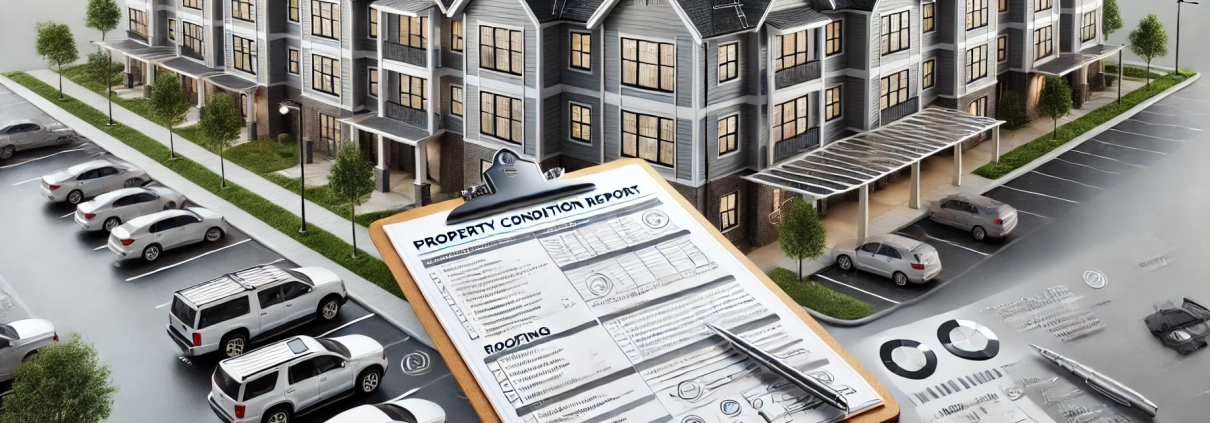Property Condition Report
Also referred to as a Property Condition Assessment (PCA), the Property Condition Report (PCR) assesses the physical condition through a thorough inspection. It evaluates all of the improvements and various systems of each building on a property. Buyers or mortgage lenders may require items on the PCR be remedied before completing the transaction or funding loan proceeds.
Putting ‘Property Condition Report’ in Context
Background
Sierra Equity Partners, a real estate private equity firm, is in the process of acquiring a 150-unit, market-rate multifamily apartment community called Riverwood Apartments in Sacramento, California. The acquisition is classified as a Core-Plus investment because the property is located in a desirable submarket and has stable cash flow, but it requires minor capital improvements to optimize its operational efficiency.
The Role of the Property Condition Report (PCR)
During the due diligence phase of the acquisition, Sierra Equity Partners engages a third-party engineering firm to conduct a comprehensive Property Condition Report (PCR). The purpose of the PCR is to assess the physical condition of the property, identify potential immediate and long-term repair needs, and estimate the costs to remedy any issues. This step is critical for the firm’s underwriting process and risk assessment.
Key Findings from the PCR
The PCR inspection of Riverwood Apartments identifies several key issues, including:
- Roofing: The inspection reveals that 20% of the roof membrane is nearing the end of its useful life, and patching will no longer be sufficient. The report recommends a partial roof replacement at an estimated cost of $125,000.
- HVAC Systems: Out of 150 HVAC units, 12 are flagged as being beyond their useful life, requiring replacement within the next 12 months. The estimated replacement cost is $4,000 per unit, totaling $48,000.
- ADA Compliance: The PCR identifies that several parking spaces and building entrances are not fully compliant with current ADA (Americans with Disabilities Act) standards. Remediation is expected to cost approximately $25,000.
Impact on the Acquisition
The findings from the PCR are crucial in determining how Sierra Equity Partners proceeds with the deal. The firm’s acquisitions team uses the report to negotiate certain remedies with the seller. Three potential courses of action are considered:
- Request a purchase price reduction to account for the total estimated repair costs of $198,000 ($125,000 for roofing, $48,000 for HVAC, and $25,000 for ADA compliance).
- Negotiate a seller credit at closing to cover part or all of the costs of repairs.
- Plan to address the repairs post-acquisition, using an established capital reserve set aside for property improvements.
In this case, Sierra Equity Partners opts to negotiate a seller credit of $150,000 at closing, covering a significant portion of the estimated repair costs. The firm decides to handle the remaining repairs using its capital reserves, as it believes these improvements will increase the property’s overall value and operating efficiency.
Conclusion
The Property Condition Report (PCR) plays a critical role in multifamily acquisitions like the purchase of Riverwood Apartments. By identifying physical deficiencies and estimating repair costs, the PCR allows Sierra Equity Partners to adjust its underwriting assumptions, negotiate terms with the seller, and prepare a post-acquisition capital expenditure plan. Without the PCR, the firm might have been unaware of the hidden costs associated with the roof, HVAC systems, and ADA compliance issues. This scenario illustrates how the PCR serves as a vital tool in protecting investors, ensuring proper risk management, and supporting deal negotiations.
Click here to get this CRE Glossary in an eBook (PDF) format.

